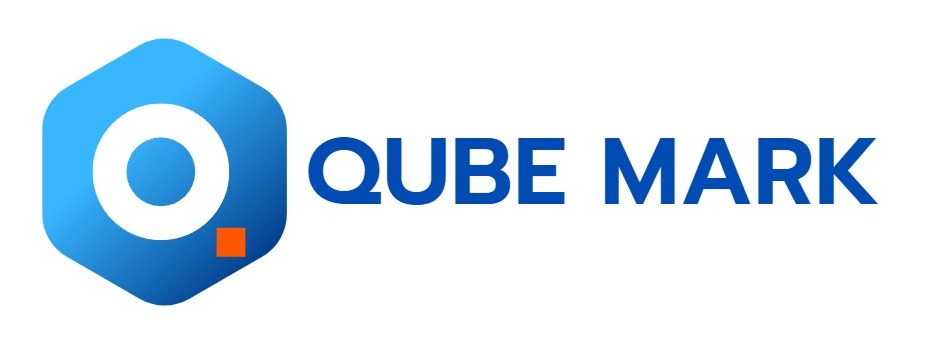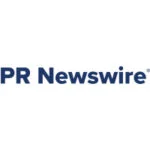DELRAY BEACH, Fla., June 11, 2025 -- The BEV Seatbelt Material Market is estimated to reach 96.52 megatons in 2025 to 248.97 megatons in 2032 at a CAGR of 14.5%, according to a new report by MarketsandMarkets. According to JATO Dynamics Limited, BEV sales showed robust growth, where BEVs account for 17% of new car registrations in Europe in April 2025, which is higher than the previous year, and US electric vehicle sales have risen by 11.4% year over year in Q1 2025. This surge in BEV adoption, along with broader vehicle production increases, is fueling demand for seatbelt materials, reaching a material volume of up to 218.99 mega-tons by 2032, driven by stricter safety regulations and consumer emphasis on occupant protection. Modern BEVs are increasingly equipped with advanced active safety systems. Autonomous emergency braking, lane-keeping assistance, and adaptive cruise control are often integrated with smart seatbelt technologies to optimize occupant restraint and enhance crash avoidance capabilities. This integration of new safety features in BEVs not only boosts demand for advanced seatbelt systems but also drives innovation and growth in the seatbelt market as automakers prioritize safety to meet regulatory standards and consumer expectations.
Download an Illustrative overview: https://www.marketsandmarkets.com/pdfdownloadNew.asp?id=132569054
Browse in-depth TOC on "ICE & BEV Seatbelt Material Market"
256 - Tables
86 - Figures
300 - Pages
"Steel holds the maximum market share for the seatbelt material market segment."
Steel is the largest material market for seatbelt systems as it is extensively used in many subcomponents, such as the retractor mechanism, buckle, and anchor, where structural integrity under high loads is highly desired. The retractor uses steel springs and gears for controlled tension and locking functions; the buckle contains steel frames and tongues for secure engagement; and the anchor is inserted into the buckle, which is typically made entirely of stamped or forged steel. Considering the percentage penetration for all the components, the retractor holds 70–75%, the buckle holds 72–77%, and the anchor holds 80-85% of the steel material.
Aluminum is used selectively to reduce weight without compromising strength, especially in performance vehicles. The aluminum parts are used in some parts of seatbelts in premium cars and high-end vehicles. These are offered mostly in Europe and the Americas. Also, the OEMs on the global level are focused on lightweight materials such as plastic and aluminum. However, steel would remain dominant across all the seatbelt materials in all components.
"Buckle is the fastest-growing segment of the seatbelt material market."
Buckle plays an important role in automotive safety, regulatory pressures, and ongoing innovation. Modern seatbelt buckles have evolved from simple three-piece mechanisms to complex assemblies with up to 10 parts, integrating advanced safety features like automatic locking and indicators to ensure secure fastening during collisions. A typical seatbelt buckle comprises around 6 to 10 assembled parts, including the release button, tongue receiver, locking mechanism, springs, and housing. Steel is used in the internal locking mechanism and structural frame due to its high strength, contributing about 65-70% of the buckle's total weight. Polycarbonate forms the outer casing and button due to its impact resistance and aesthetic flexibility, contributing around 20–25%, while nylon is used for internal guiding or cushioning components, making up about 8-13% of the buckle's weight.
The seatbelt buckle is equipped with a seatbelt sensor that gives a reminder when the anchor is in an unplugged state. OEMs are now actively offering this sensor as a safety feature for all passenger car variants. Also, the same feature is offered in LCVs and vans in Europe and the US. Some advancements include illuminated buckles for better visibility, active buckle lifters for easier access, and smart systems that adjust belt tension based on occupant characteristics.
"Asia Pacific is projected to remain the largest seatbelt material market."
The Asia Pacific region dominates global passenger car production, with China leading by a wide margin, manufacturing approximately 31.28 million passenger cars in 2024, accounting for nearly half of the region's output. Japan follows with around 8.23 million units, while India produced about 4.8 million passenger cars, collectively making these three countries the core of the region's automotive manufacturing strength. China's robust joint ventures and policy support have enabled it to surpass traditional leaders like Japan and South Korea, while India and Japan continue to serve as vital production and innovation hubs with strong domestic brands and export capabilities. In the ICE segment, these countries still account for most vehicles, but the landscape is rapidly evolving as electrification accelerates. For instance, according to EVBoosters report published in September 2024, till August 2024, more than half (53.8%) of all passenger vehicle sales in China were new energy vehicles (NEVs), with BEVs alone making up 30.6% of total sales. In contrast, India's BEV market remains nascent, with BEVs constituting just 2.5% of total passenger vehicle sales in 2024, though this segment is growing quickly, led by launches from Tata Motors and MG Motors.
This surge in BEV adoption, especially in China, is driving significant changes in demand for seatbelt systems and materials. As BEVs and advanced ICE vehicles increasingly incorporate ADAS and active safety features, the need for high-performance seatbelt retractors, pretensioners, and lightweight, durable webbing is rising. Regional OEMs and Tier-I suppliers are responding with innovations such as smart seatbelt systems, eco-friendly and recyclable materials, and integration with connected vehicle platforms. The growing focus on safety, stricter regulations, and the push for sustainability are collectively propelling the Asia Pacific seatbelt material market forward, ensuring that the region remains at the forefront of both production and safety technology innovation.
Key Market ICE & BEV Seatbelt Material Industry:
Prominent players in the ICE & BEV Seatbelt Material Companies include Autoliv (Sweden), Joyson Safety Systems (US), ZF Friedrichshafen AG (Germany), Tokairika, Co., Ltd. (Japan), Yanfeng (Japan), Far Europe Inc. (China), GWR Safety System (US), Holmbergs Safety System Holding AB (Sweden), Ashimori Industrial Co. Ltd. (Japan), and Samsong Industries, Ltd, (South Korea).
Get 10% Free Customization on this Report: https://www.marketsandmarkets.com/requestCustomizationNew.asp?id=132569054
This report provides insights on:
- Analysis of critical drivers (increase in stringency in safety standards and growing crash tests), restraints (increase in the development of active safety system), opportunities (lighter and sustainable materials and small textiles), and challenges (chemical compatibility, durability requirement, and production and manufacturing) influencing the growth of the seatbelt material market
- Product Development/Innovation: Detailed insights into upcoming technologies and new products launched in the seatbelt material market
- Market Development: Comprehensive market information – the report analyzes the authentication and brand protection market across varied regions
- Market Diversification: Exhaustive information about new products & services, untapped geographies, recent developments, and investments in the seatbelt material market
- Competitive Assessment: In-depth assessment of market shares, growth strategies, and service offerings of leading players in the seatbelt material market, such as Autoliv (Sweden), Joyson Safety Systems (US), ZF Friedrichshafen AG (Germany), Tokairika, Co., Ltd. (Japan), and Yanfeng (Japan)
Related Reports:
Automotive Airbags & Seatbelts Market
Get access to the latest updates on ICE & BEV Seatbelt Material Companies and ICE & BEV Seatbelt Material Industry Growth
About MarketsandMarkets™:
MarketsandMarkets™ has been recognized as one of America's Best Management Consulting Firms by Forbes, as per their recent report.
MarketsandMarkets™ is a blue ocean alternative in growth consulting and program management, leveraging a man-machine offering to drive supernormal growth for progressive organizations in the B2B space. With the widest lens on emerging technologies, we are proficient in co-creating supernormal growth for clients across the globe.
Today, 80% of Fortune 2000 companies rely on MarketsandMarkets, and 90 of the top 100 companies in each sector trust us to accelerate their revenue growth. With a global clientele of over 13,000 organizations, we help businesses thrive in a disruptive ecosystem.
The B2B economy is witnessing the emergence of $25 trillion in new revenue streams that are replacing existing ones within this decade. We work with clients on growth programs, helping them monetize this $25 trillion opportunity through our service lines – TAM Expansion, Go-to-Market (GTM) Strategy to Execution, Market Share Gain, Account Enablement, and Thought Leadership Marketing.
Built on the 'GIVE Growth' principle, we collaborate with several Forbes Global 2000 B2B companies to keep them future-ready. Our insights and strategies are powered by industry experts, cutting-edge AI, and our Market Intelligence Cloud, KnowledgeStore™, which integrates research and provides ecosystem-wide visibility into revenue shifts.
To find out more, visit www.MarketsandMarkets™.com or follow us on Twitter , LinkedIn and Facebook .
This News is brought to you by Qube Mark, your trusted source for the latest updates and insights in marketing technology. Stay tuned for more groundbreaking innovations in the world of technology.









